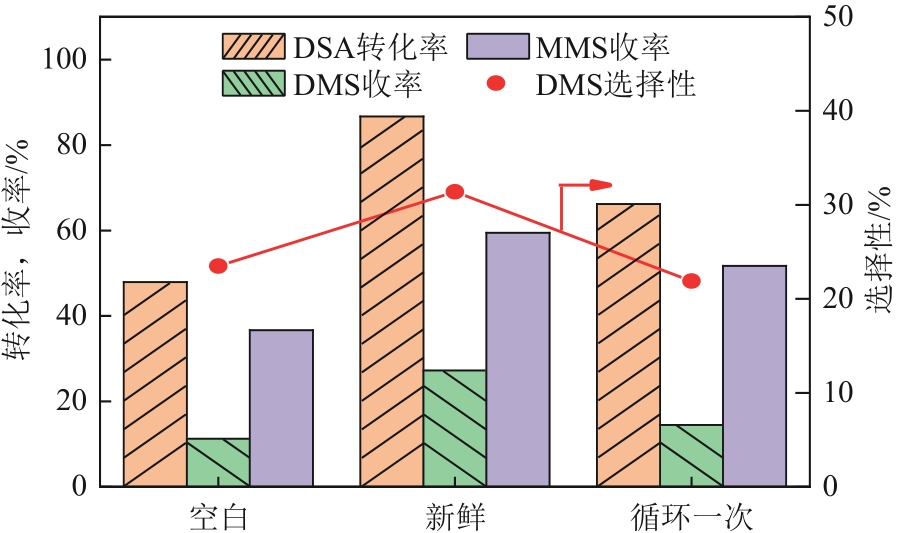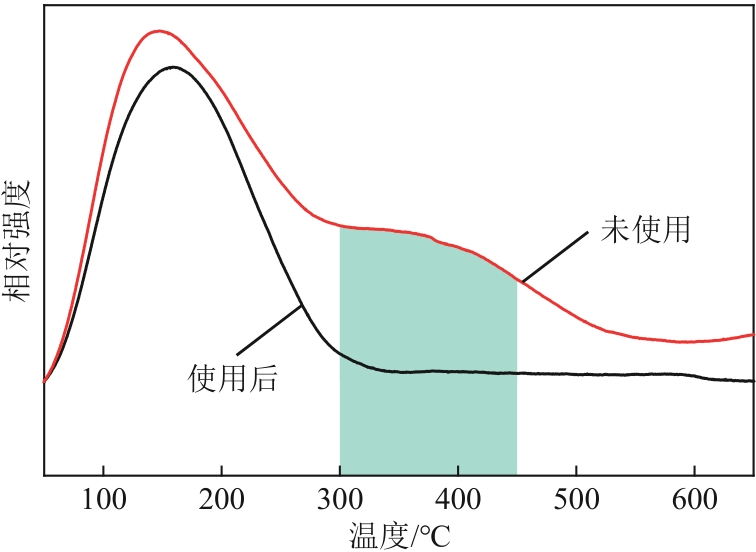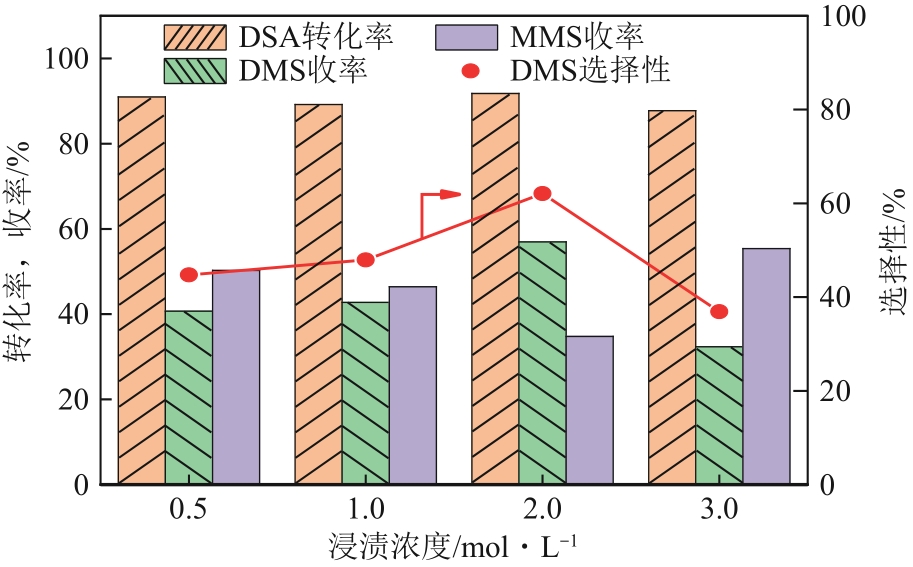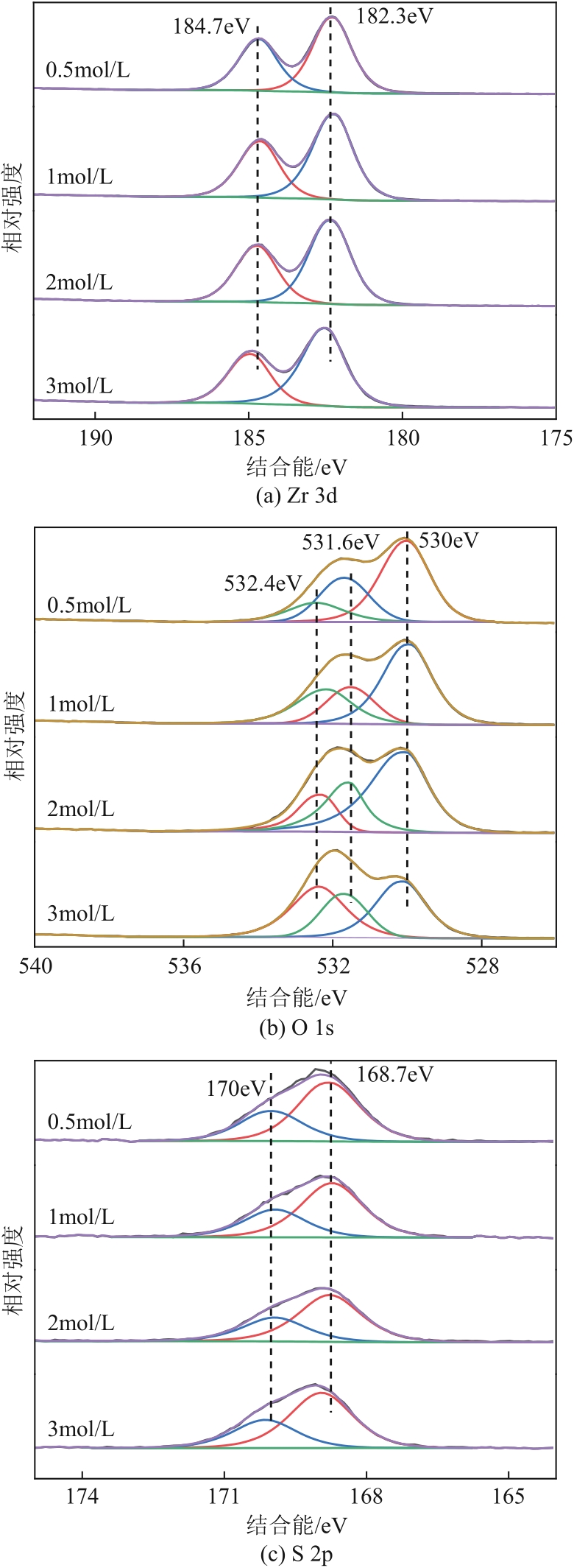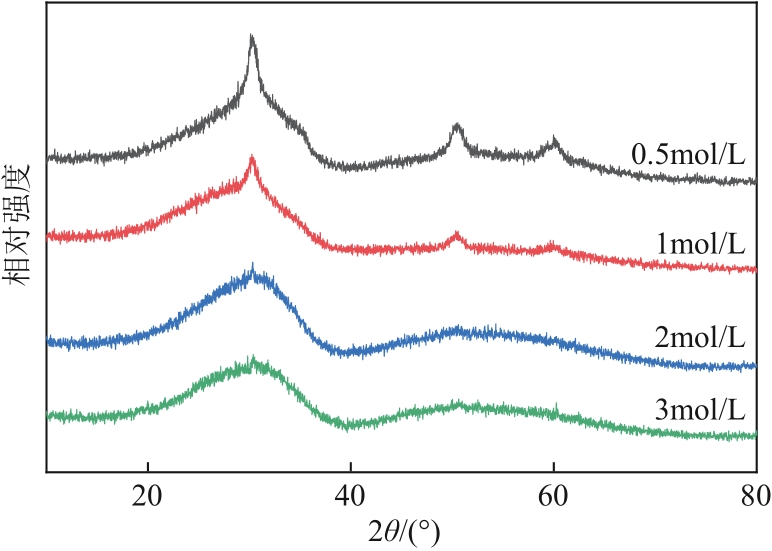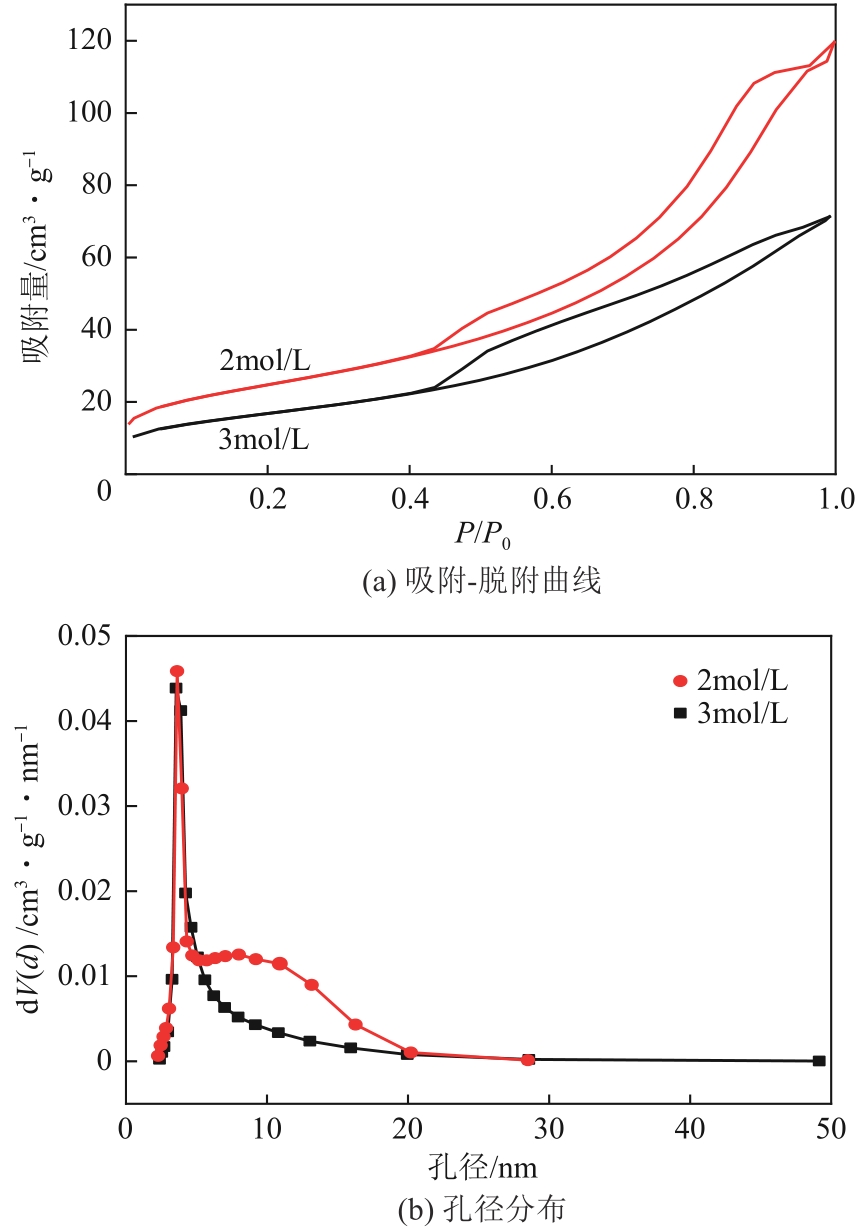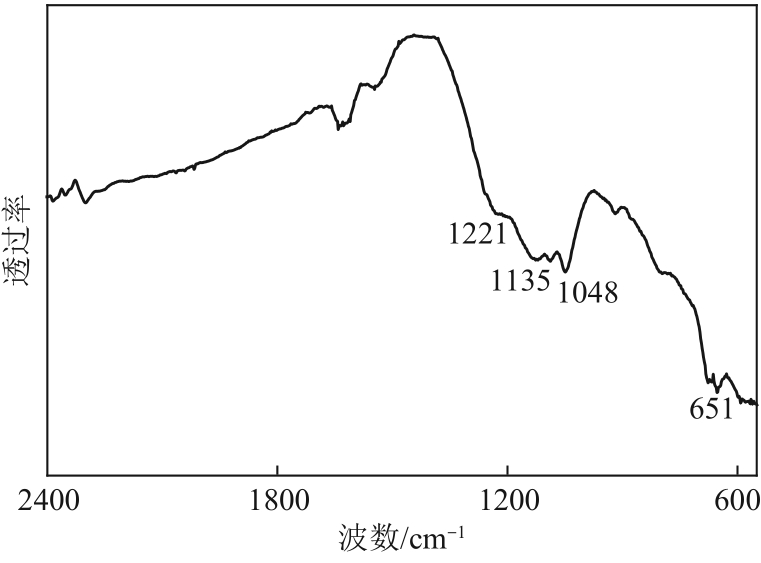| 1 |
张耀, 邱晓曼, 陈程鹏, 等. 生物法制造丁二酸研究进展[J]. 化工学报, 2020, 71(5): 1964-1975.
|
|
ZHANG Yao, QIU Xiaoman, CHEN Chengpeng, et al. Recent progress in microbial production of succinic acid[J]. CIESC Journal, 2020, 71(5): 1964-1975.
|
| 2 |
HE Liangtu, LIU Lei, HUANG Yuzhang, et al. One-pot synthesis of dimethyl succinate from d-fructose using Amberlyst-70 catalyst[J]. Molecular Catalysis, 2021, 508: 111584.
|
| 3 |
夏榆, 姚勇波, 姚菊明, 等. PBS/天然高分子复合材料的现状及进展[J]. 塑料, 2022, 51(2): 85-88, 100.
|
|
XIA Yu, YAO Yongbo, YAO Juming, et al. Current status and development of PBS/natural polymer composite[J]. Plastics, 2022, 51(2): 85-88, 100.
|
| 4 |
李求进, 梁伯润. 聚乙二醇丁二酸酯/酚醛树脂共混物的结晶行为[J]. 合成技术及应用, 2006, 21(1): 1-3.
|
|
LI Qiujin, LIANG Borun. Study on crystallization behavior of PESu/phenolic blends[J]. Synthetic Technology and Application, 2006, 21(1): 1-3.
|
| 5 |
WAN Xinyan, REN Dezhang, LIU Yunjie, et al. Facile synthesis of dimethyl succinate via esterification of succinic anhydride over ZnO in methanol[J]. ACS Sustainable Chemistry and Engineering, 2018, 6(3): 2969-2975.
|
| 6 |
姚伶俐, 潘海峰, 田文娟, 等. 代谢工程改造大肠杆菌合成丁二酸及发酵罐放大工艺[J]. 微生物学通报, 2018, 45(12): 2541-2551.
|
|
YAO Lingli, PAN Haifeng, TIAN Wenjuan, et al. Production of succinate by a metabolic engineered Escherichia coli and its scale-up process in fermentor[J]. Microbiology China, 2018, 45(12): 2541-2551.
|
| 7 |
OKINO Shohei, NOBURYU Ryoji, SUDA Masako, et al. An efficient succinic acid production process in a metabolically engineered Corynebacterium glutamicum strain[J]. Applied Microbiology and Biotechnology, 2008, 81(3): 459-464.
|
| 8 |
SONG Hyohak, LEE Sang Yup. Production of succinic acid by bacterial fermentation[J]. Enzyme and Microbial Technology, 2006, 39(3): 352-361.
|
| 9 |
ORJUELA Alvaro, YANEZ Abraham J, PEEREBOOM Lars, et al. A novel process for recovery of fermentation-derived succinic acid[J]. Separation and Purification Technology, 2011, 83: 31-37.
|
| 10 |
ORJUELA Alvaro, KOLAH Aspi, HONG Xi, et al. Diethyl succinate synthesis by reactive distillation[J]. Separation and Purification Technology, 2012, 88: 151-162.
|
| 11 |
CABRERA-RODRÍGUEZ Carlos I, VAN DER WIELEN Luuk A M, STRAATHOF Adrie J J. Separation and catalysis of carboxylates: Byproduct reduction during the alkylation with dimethyl carbonate[J]. Industrial & Engineering Chemistry Research, 2015, 54(44): 10964-10973.
|
| 12 |
LÓPEZ-GARZÓN Camilo S, OTTENS Marcel, VAN DER WIELEN Luuk A M, et al. Direct downstream catalysis: From succinate to its diethyl ester without intermediate acidification[J]. Chemical Engineering Journal, 2012, 200/201/202: 637-644.
|
| 13 |
LÓPEZ-GARZÓN Camilo S, VAN DER WIELEN Luuk A M, STRAATHOF Adrie J J. Green upgrading of succinate using dimethyl carbonate for a better integration with fermentative production[J]. Chemical Engineering Journal, 2014, 235: 52-60.
|
| 14 |
LóPEZ-GARZóN Camilo S, VAN DER WIELEN Luuk A M, STRAATHOF Adrie J J. Ester production from bio-based dicarboxylates via direct downstream catalysis: Succinate and 2, 5-furandicarboxylate dimethyl esters[J]. RSC Advances, 2016, 6(5): 3823-3829.
|
| 15 |
CABRERA-RODRÃGUEZ Carlos I, PALTRINIERI Laura, DE SMET Louis C P M, et al. Recovery and esterification of aqueous carboxylates by using CO2-expanded alcohols with anion exchange[J]. Green Chemistry, 2017, 19(3): 729-738.
|
| 16 |
BARVE Prashant P, KAMBLE Sanjay P, JOSHI Jyeshtharaj B, et al. Preparation of pure methyl esters from corresponding alkali metal salts of carboxylic acids using carbon dioxide and methanol[J]. Industrial & Engineering Chemistry Research, 2012, 51(4): 1498-1505.
|
| 17 |
谷豹. 丁二酸钠直接酯化及固体酸催化酯化制备丁二酸二甲酯[D]. 太原: 太原理工大学, 2022.
|
|
GU Bao. Preparation of dimethyl succinate by direct esterification of sodium succinate and esterification catalyzed by solid acid[D]. Taiyuan: Taiyuan University of Technology, 2022.
|
| 18 |
薛淼, 朱美华, 钟彩君, 等. ZSM-5分子筛膜在乙酸异戊酯酯化反应中的应用[J]. 膜科学与技术, 2018, 38(4): 107-112.
|
|
XUE Miao, ZHU Meihua, ZHONG Caijun, et al. Application of ZSM-5 zeolite membrane for esterification of isoamyl acetate[J]. Membrane Science and Technology, 2018, 38(4): 107-112.
|
| 19 |
李三喜, 徐妍如, 王松. SO4 2-/TiO2-HZSM-5固体超强酸催化剂的制备及酯化性能[J]. 化工进展, 2015, 34(3): 745-750.
|
|
LI Sanxi, XU Yanru, WANG Song. Preparation of solid superacid SO4 2-/TiO2-HZSM-5 catalyst and its catalytic performance in esterification[J]. Chemical Industry and Engineering Progress, 2015, 34(3): 745-750.
|
| 20 |
WANG Shan, PU Jianglong, WU Jiaqin, et al. SO4 2-/ZrO2 as a solid acid for the esterification of palmitic acid with methanol: Effects of the calcination time and recycle method[J]. ACS Omega, 2020, 5(46): 30139-30147.
|
| 21 |
WANG Anqi, WANG Junxia, WANG Hui, et al. Synthesis of SO4 2-/TiO2-ZnAl2O4 composite solid acids as the esterification catalysts[J]. RSC Advances, 2017, 7(23): 14224-14232.
|
| 22 |
WANG Pengzhao, YUE Yuanyuan, WANG Tinghai, et al. Alkane isomerization over sulfated zirconia solid acid system[J]. International Journal of Energy Research, 2020, 44(5): 3270-3294.
|
| 23 |
IGLESIAS Jose, MELERO Juan A, MORALES Gabriel, et al. Dehydration of xylose to furfural in alcohol media in the presence of solid acid catalysts[J]. ChemCatChem, 2016, 8(12): 2089-2099.
|
| 24 |
THIMMARAJU N, MOHAMED SHAMSHUDDIN S Z, PRATAP S R, et al. Effective synthesis of novel O-acetylated compounds over ZrO2-Al2O3 solid acid[J]. Arabian Journal of Chemistry, 2019, 12(8): 1860-1869.
|
| 25 |
胡亚飞, 蔡晶, 李小森. 环戊烷-甲烷水合物生成过程的温度特性[J]. 化工进展, 2016, 35(5): 1418-1427.
|
|
HU Yafei, CAI Jing, LI Xiaosen. System temperature properties in the process of the cyclopentane-methane binary hydrates formation[J]. Chemical Industry and Engineering Progress, 2016, 35(5): 1418-1427.
|
| 26 |
赵培瑞, 李娜, 陈茜文, 等. 改性固体酸SO4 2-/ZrO2催化合成没食子酸甲酯的研究[J]. 中南林业科技大学学报, 2017, 37(6): 114-118.
|
|
ZHAO Peirui, LI Na, CHEN Qianwen, et al. Study on synthesis of methyl gallate catalyzed by modified solid superacid SO4 2-/ZrO2 [J]. Journal of Central South University of Forestry & Technology, 2017, 37(6): 114-118.
|
| 27 |
张萍, 李露, 于凤丽, 等. SO4 2-/ZrO2的制备工艺对催化橡胶籽油裂解油酯化的影响[J]. 燃料化学学报, 2013, 41(11): 1322-1327.
|
|
ZHANG Ping, LI Lu, YU Fengli, et al. Preparation of SO4 2-/ZrO2 catalyst and its performance in the esterification of pyrolytic rubber seed oil[J]. Journal of Fuel Chemistry and Technology, 2013, 41(11): 1322-1327.
|
| 28 |
ZHANG Hongwei, YANG Weijia, ROSLAN Irwan Iskandar, et al. A combo Zr-HY and Al-HY zeolite catalysts for the one-pot cascade transformation of biomass-derived furfural to γ-valerolactone[J]. Journal of Catalysis, 2019, 375: 56-67.
|
| 29 |
SONG Hua, CUI Xuehan, JIANG Bolong, et al. Preparation of SO4 2-/ZrO2 solid superacid and oxidative desulfurization using K2FeO4 [J].Research on Chemical Intermediates, 2015, 41(1): 365-382.
|
| 30 |
WARD D A, KO E I. One-step synthesis and characterization of zirconia-sulfate aerogels as solid superacids[J]. Journal of Catalysis, 1994, 150(1): 18-33.
|
| 31 |
张亚平, 黎汉生, 甄彬, 等. SO4 2-/TiO2-SiO2固体超强酸的制备、表征及其性能[J]. 化工进展, 2011, 30(S1): 155-158.
|
|
ZHANG Yaping, LI Hansheng, ZHEN Bin, et al. Preparation, characterization and catalytic properties of SO4 2-/TiO2-SiO2 solid superacid[J]. Chemical Industry and Engineering Progress, 2011, 30(S1): 155-158.
|
| 32 |
ARDIZZONE S, BIANCHI C L, GRASSI E. The role of the oxide precursor on the features of sulphated zirconia[J]. Colloids and Surfaces A: Physicochemical and Engineering Aspects, 1998, 135(1/2/3): 41-51.
|
| 33 |
KUMARI Latha, LI W Z, XU J M, et al. Controlled hydrothermal synthesis of zirconium oxide nanostructures and their optical properties[J]. Crystal Growth & Design, 2009, 9(9): 3874-3880.
|
| 34 |
BEDILO Alexander F, KIM Vladimir I, VOLODIN Alexander M. Effect of light on reactions over sulfated zirconia[J]. Journal of Catalysis, 1998, 176(2): 294-304.
|
| 35 |
WANG Anqi, WANG Junxia, LU Can, et al. Esterification for biofuel synthesis over an eco-friendly and efficient kaolinite-supported SO4 2-/ZnAl2O4 macroporous solid acid catalyst[J]. Fuel, 2018, 234: 430-440.
|
| 36 |
马惠琴, 王卫, 马媛媛. La改性固体超强酸S2O8 2-/ZrO2-Al2O3的制备及催化性能研究[J]. 材料导报, 2014, 28(6): 48-52, 64.
|
|
MA Huiqin, WANG Wei, MA Yuanyuan. Preparation and catalytic properties study of solid superacid catalyst S2O8 2-/ZrO2-Al2O3 modified by lanthanum[J]. Materials Review, 2014, 28(6): 48-52, 64.
|
| 37 |
金顶峰, 王新庆, 金红晓, 等. 硫酸化介孔氧化锆固体超强酸的制备和应用研究[J]. 材料工程, 2008, 36(10): 223-227.
|
|
JIN Dingfeng, WANG Xinqing, JIN Hongxiao, et al. Synthesis and performance of sulfated mesoporous zorcina solid superacid[J]. Journal of Materials Engineering, 2008, 36(10): 223-227.
|
| 38 |
赵燕, 郑琦宏, 于洁. SO4 2-/TiO2型光催化材料的制备与表征[J]. 材料导报, 2015, 29(S1): 313-315, 322.
|
|
ZHAO Yan, ZHENG Qihong, YU Jie. Preparation and characterization of SO4 2-/TiO2 photocatalyst[J]. Materials Review, 2015, 29(S1): 313-315, 322.
|
| 39 |
戎梅竹, 申延明, 刘宏伟, 等. SO4 2-/ZrO2固体超强酸的制备及表征[J]. 化工科技, 2006, 14(4): 34-37.
|
|
RONG Meizhu, SHEN Yanming, LIU Hongwei, et al. Preparation and characterization of superacid SO4 2-/ZrO2 [J]. Science & Technology in Chemical Industry, 2006, 14(4): 34-37.
|
| 40 |
郑云天, 位艳宾, 徐庆茹, 等. SO4 2-/ZrO2固体超强酸的制备及催化性能[J]. 化工技术与开发, 2016, 45(7): 7-10.
|
|
ZHENG Yuntian, WEI Yanbin, XU Qingru, et al. Preparation and catalytic properties of SO4 2-/ZrO2 solid superacid[J]. Technology & Development of Chemical Industry, 2016, 45(7): 7-10.
|
| 41 |
王晋东, 李文志, 杜志杰, 等. Ni-S2O8 2-/TiO2固体超强酸催化解聚木质素的研究[J]. 太阳能学报, 2017, 38(4): 867-873.
|
|
WANG Jindong, LI Wenzhi, DU Zhi jie, et al. Study of lignin catalytic depolymerization by solid superacid Ni-S2O8 2-/TiO2 [J]. Acta Energiae Solaris Sinica, 2017, 38(4): 867-873.
|
| 42 |
SHI Xuejun, WU Yulong, LI Panpan, et al. Catalytic conversion of xylose to furfural over the solid acid SO4 2-/ZrO2-Al2O3/SBA-15 catalysts[J]. Carbohydrate Research, 2011, 346(4): 480-487.
|
 ), WANG Yugao(
), WANG Yugao( ), GU Bao, SHEN Jun
), GU Bao, SHEN Jun


